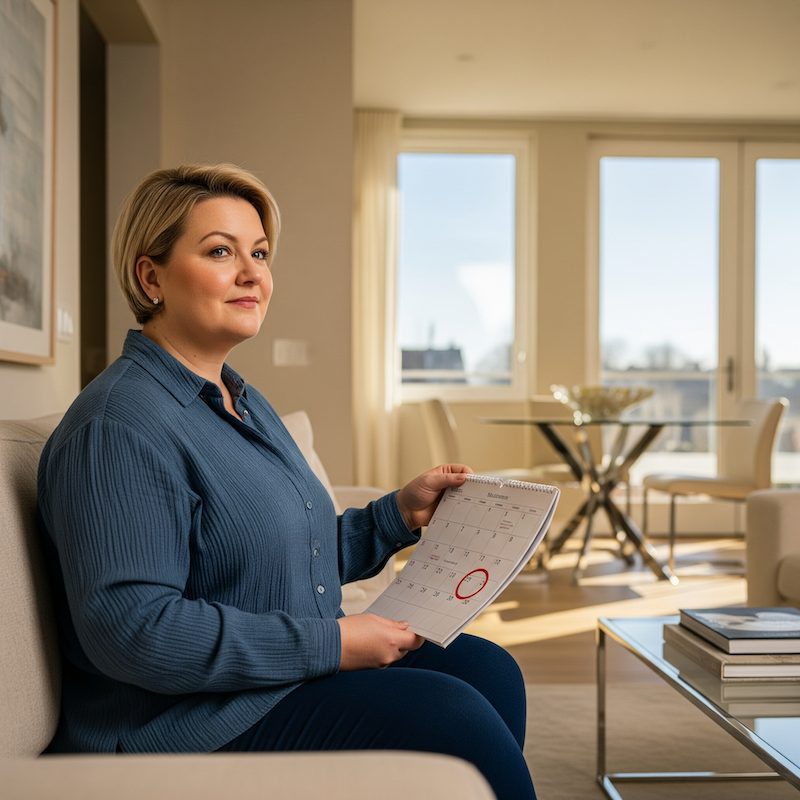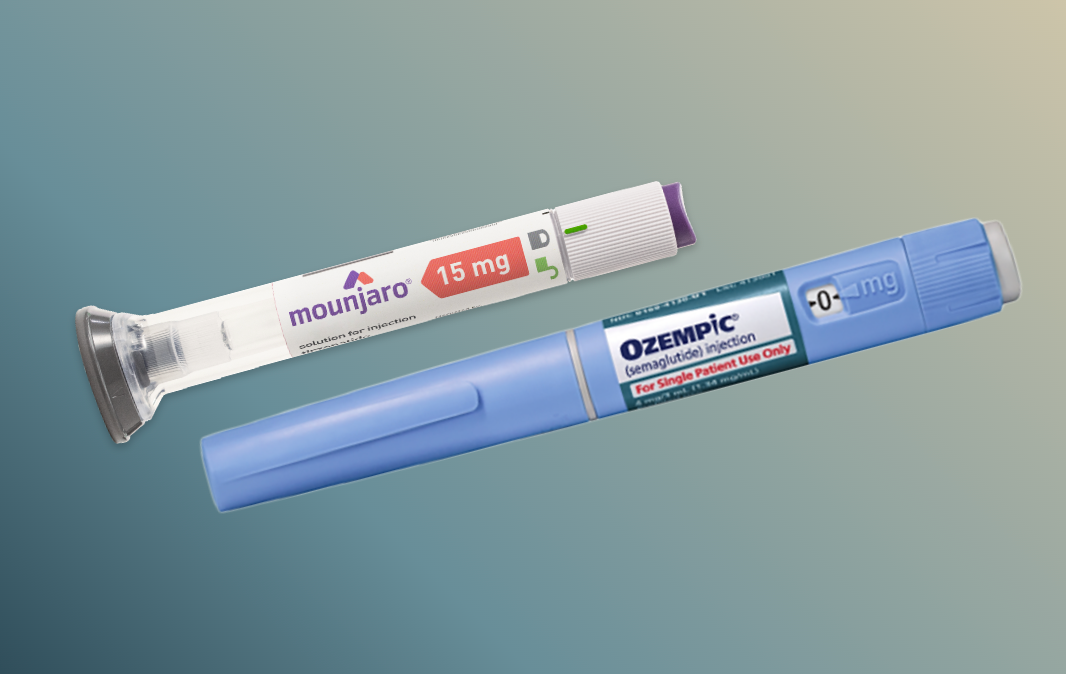How to Lose 40 Pounds and Keep It Off
Learn how to lose 40 pounds without surgery. Find out how long it takes and explore proven methods to keep the weight off for good.

Bariendo Team
Team @ Bariendo
Losing 40 pounds isn’t just a physical challenge—it’s an emotional one, too. If you’ve tried every diet plan, pushed through exhausting workouts, and counted every calorie, but the number on the scale just isn’t moving, you’re not alone. Many people who set out to lose a significant amount of weight struggle to maintain long-term success—and it’s not because they aren’t trying hard enough.The problem isn’t willpower. It’s that the traditional advice to “just eat less and move more” often falls short, especially when your body is working against you. While diet and exercise are important tools, research shows that lifestyle changes alone typically result in just a 3–5% reduction in body weight over time. So, if you’re starting at 200 pounds, that means an average loss of only 6–10 pounds through conventional methods.And while bariatric surgery can be effective, it’s not the right path for everyone. If your goal is to lose 40 pounds without surgery—and keep it off—endoscopic sleeve gastroplasty (ESG) is one of the only minimally invasive procedures that can help you reach that level of sustained weight loss. In this guide, we’ll cover what realistic results look like, how long it can take to lose 40 pounds, why most diets don’t work, and what you need to do differently to finally reach your goals.
How Long Does It Take to Lose 40 Pounds?
Most experts recommend losing weight at the rate of 1-2 pounds per week, which means it would take about 10 months to lose 40 pounds. But the reality is,it’s very difficult to achieve this level of weight loss through diet and exercise alone. Studies show that lifestyle changes typically lead to a 3-5% total body weight loss, which translates to only about 6–10 pounds if your starting weight is 200 pounds. That’s a long way from your 40-pound goal.And while losing weight more quickly might sound appealing, it often does more harm than good. When your body sheds pounds too fast—especially through extreme calorie restriction—it can lead to muscle loss and activate your body’s survival mode. This is known as set point theory, where your metabolism slows down in response to rapid weight loss, making it harder to keep the weight off. Most importantly, extreme dieting isn’t sustainable. Old habits tend to creep back in, and the weight often returns.If you’re aiming to lose 40 pounds and keep it off, the key is building long-term, healthy habits that support sustainable progress. That’s why clinically guided solutions, like ESG Stomach Tightening™, are designed to help you achieve steady, lasting weight loss—without the risks and rebound that come with extreme dieting.
The Factors That Impact Success
Weight loss isn’t one-size-fits-all. How quickly and effectively someone can lose 40 pounds depends on a variety of factors—many of which are outside their control. In this section, we’ll explore the key factors that influence progress and explain how expert medical support can help you overcome common roadblocks and stay on track for the long haul.
Calorie Deficit and Balanced Diet
At the most basic level, weight loss happens when you burn more calories than you take in. This is known as a calorie deficit. But creating that deficit isn’t just about eating less. It’s about fueling your body in a way that supports energy, metabolism, and overall health.
That’s where a balanced diet comes in. Prioritizing nutrient dense, whole foods like lean proteins, fiber-rich vegetables, healthy fats, and complex carbs can help you feel satisfied while still cutting back on excess calories. Fad diets that eliminate entire food groups or drastically restrict calories might show fast results, but they’re rarely sustainable — and often lead to weight regain.
For long-term success, it’s important to focus on small, consistent changes that you can maintain. And for many people, working with a medical team can make all the difference in creating a plan that fits their lifestyle and actually works.
Exercise and Physical Activity
Exercise plays a key role in supporting weight loss, no matter which method you choose. And it’s not just about burning calories — it’s about helping your body stay strong, energized, and healthy as you lose weight. Regular movement can boost your metabolism, improve your mood, and help you maintain muscle mass, which is especially important during significant weight loss.
That doesn’t mean you need to spend hours at the gym. The most effective workout is the one you can stick with. Whether it’s walking, swimming, strength training, or a favorite group class, the goal is to stay consistent and build a routine that feels manageable.
When combined with medical support and nutrition guidance, physical activity becomes part of a bigger picture that helps you lose weight safely and keep it off over time.
Managing Stress and Getting Enough Sleep
When it comes to weight loss, stress and sleep often get overlooked—but they can make a big difference in your results. High stress levels trigger the release of cortisol, a hormone that can increase cravings and make it harder to burn fat. At the same time, poor sleep can disrupt hunger hormones and slow your metabolism, making it more difficult to stick to healthy habits.
If you’re trying to lose 40 pounds, managing stress and prioritizing quality sleep is essential. That might mean setting better boundaries with work, incorporating mindfulness practices, or creating a bedtime routine that helps you wind down and recharge.
Addressing these areas isn’t just good for your mental health—it helps your body function at its best, so you can make real, lasting progress.
Age and Metabolism
As we get older, losing weight often gets harder, and it’s not just your imagination. Your metabolism naturally slows down with age, meaning your body burns fewer calories at rest. Hormonal changes, muscle loss, and shifts in activity levels can all contribute to weight gain or make weight loss more difficult.
But slower progress doesn’t mean no progress. Understanding how your metabolism works can help you make smarter choices. Strength training, eating enough protein, and getting medical support can all help preserve lean muscle and keep your metabolism more active.
If you’re over 40 and struggling to lose weight, you’re not alone, and you’re not out of options. With the right tools and a personalized plan, it’s absolutely possible to lose significant weight, even if your body isn’t responding the way it used to.
Underlying Health Conditions
Often, it’s not diet or exercise holding you back. It’s what’s going on inside your body. Conditions like thyroid disorders, insulin resistance, polycystic ovary syndrome (PCOS), and even chronic inflammation can all make weight loss more difficult. These issues can affect how your body stores fat, how hungry you feel, and how your metabolism functions.
If you’ve been doing “everything right” but still aren’t seeing results, it may be time to look deeper. Getting support from a medical team that understands the full picture of your health can help identify and address these hidden barriers.
At Bariendo, our specialists work with patients to uncover the root causes of stalled progress and create a plan that works with, not against, their bodies.
Ongoing Medical Support
One of the biggest factors in long-term weight loss success is the support you receive along the way. Most people who lose significant weight and keep it off long-term do so with medical intervention and ongoing expert care.
That’s why Bariendo’s approach goes beyond procedures. From day one, patients are supported by a team of professionals, including registered dietitians, nurse practitioners, and the very experts who pioneered non-surgical weight loss techniques like ESG. Whether you need help adjusting your plan, staying motivated, or troubleshooting setbacks, you won’t have to figure it out on your own.
Why It’s So Hard to Lose 40 Pounds On Your Own
If you’ve tried to lose a significant amount of weight on your own and felt like nothing worked, you’re not alone. And it’s not your fault. Many people assume that losing weight is all about willpower, but the truth is much more complex.
Obesity is a chronic health condition. And just like any other chronic health condition, it requires ongoing treatment and support. Research shows that substantial weight loss is rarely achieved without medical intervention and long term care.
Let’s explore why it’s so difficult to lose 40 pounds through traditional means and why you need more than just diet and exercise to reach your goal.
The Limits of Diet and Exercise
Diet and exercise are important parts of any healthy lifestyle, but for many people, they’re not enough to achieve significant, long-term weight loss. While cutting calories and increasing activity can lead to short-term results, research shows that the body often fights back by slowing metabolism, increasing hunger hormones, and making it harder to keep losing weight.
Over time, this can create a frustrating cycle of losing and regaining weight, even when you’re doing everything “right.” And the more times you repeat that cycle, the harder it can become to see progress.
That’s why so many people who are trying to lose 40 pounds eventually hit a wall. It’s not a lack of effort. It’s a biological response that makes it incredibly difficult to maintain a calorie deficit for the long haul. When that happens, more support is often needed. Not stricter diets or longer workouts, but a new approach that works with your body instead of against it.
Why Willpower Isn’t the Problem
Most weight loss advice puts willpower at the center of success — but science tells a different story. Willpower is a limited resource, and when you’re managing work, family, stress, and everyday responsibilities, it’s easy to burn out. Expecting sheer discipline to carry you through a massive weight loss journey like losing 40 pounds simply isn’t realistic.
More importantly, obesity is a medical condition, not a motivational issue. Your biology, hormones, and environment all influence your ability to lose weight. That’s why long-term success depends less on pushing harder and more on getting the right kind of support.
Instead of asking “Why can’t I stick with it?”, the better question is, “What tools and guidance do I need to succeed?” At Bariendo, that’s exactly the shift we help patients make, from self-blame to solutions that are actually designed to work.
What the Research Shows About Substantial Weight Loss Through Diet and Exercise Alone
While diet and exercise are essential components of a healthy lifestyle, research shows that for most people, they’re not enough to achieve significant, long-term weight loss. Studies indicate that only about 20% of individuals who lose at least 10% of their body weight are able to maintain that loss for a year or more.
Moreover, the challenge intensifies with larger weight loss goals. For those aiming to lose 40 pounds or more, the success rates through lifestyle changes alone are even lower. One study found that less than 1% of individuals with obesity were able to attain and maintain a normal body weight through diet and exercise alone.
These statistics highlight the body’s natural resistance to substantial weight loss. As weight decreases, the body often responds by slowing metabolism and increasing hunger signals, making it increasingly difficult to continue losing weight or maintain weight loss over time.
This is why medically supported interventions, like Bariendo’s ESG Stomach Tightening™ procedure, can be crucial. They provide the necessary tools and support to overcome biological barriers, leading to more sustainable weight loss outcomes.
Bariatric Surgery as a Last Resort
Bariatric surgery is one of the most well-known options for treating severe obesity — and for some people, it can be life-changing. The two most common procedures are gastric sleeve (sleeve gastrectomy) and gastric bypass (Roux-en-Y). Both involve permanent changes to the stomach and digestive system to reduce how much food you can eat and how your body absorbs calories.
- Gastric sleeve removes about 80% of the stomach, turning it into a smaller, sleeve-shaped pouch.
- Gastric bypass goes a step further by rerouting part of the small intestine, which affects how your body absorbs nutrients.
While both procedures can lead to significant weight loss, they also come with higher risk of complications, longer recovery times, and lifelong dietary restrictions. And because they are irreversible, deciding to undergo the surgery is a major, often overwhelming decision.
That’s why many people delay or avoid surgery altogether, even when they need help losing a substantial amount of weight. The good news is, there is another option. Endoscopic Sleeve Gastroplasty (ESG) offers a non-surgical, incision-free alternative that delivers meaningful weight loss without cutting or rerouting the digestive system.
How to Lose 40 Pounds without Surgery-For Real This Time
By now, it’s clear: losing 40 pounds and keeping it off isn’t just about cutting calories or hitting the gym harder. It’s about having the right tools and medical support to achieve your goals. For people who want real results without the risks of surgery, Endoscopic Sleeve Gastroplasty (ESG) offers a breakthrough solution.
Unlike traditional weight loss methods or invasive surgery, ESG is a non-surgical, incision-free procedure that helps you feel full sooner and eat less, without permanently altering your anatomy. It’s backed by science, performed by experts, and designed to deliver lasting weight loss safely and sustainably.
How ESG Works and Why It’s Different
Endoscopic Sleeve Gastroplasty (ESG) is a non-surgical weight loss procedure that reshapes the stomach from the inside — without any cuts, incisions, or permanent alterations. Using a flexible endoscope inserted through the mouth, a bariatric endoscopist places a series of sutures to reduce the size of the stomach by about 70–80%, forming it into a narrow, sleeve-like shape.
This smaller stomach size helps you eat less and feel full sooner — but that’s only part of the story. ESG also works by slowing gastric emptying, which means food stays in your stomach longer. This naturally extends feelings of fullness between meals and reduces the urge to snack or overeat.
Additionally, ESG has been shown to influence key hunger hormones, including ghrelin, which is responsible for triggering appetite. By adjusting both the structure and the function of the stomach, ESG helps regulate hunger signals and supports more consistent, sustainable weight loss.
The result is a powerful, non-surgical tool that not only limits how much you can eat, but also helps your body work with your weight loss goals — instead of against them.
What to Expect with Non-Surgical ESG for Weight Loss
One of the biggest benefits of ESG is how straightforward and patient-friendly the experience is — especially compared to traditional surgery. From start to finish, the entire process is designed to be safe, minimally disruptive, and fully supported by a medical team.
Before the procedure, you’ll meet with your care team for a full evaluation, including nutritional guidance, medical history review, and goal setting. Bariendo’s approach is fully personalized, so every step is tailored to your unique needs.
During the procedure, you’ll be under sedation while the doctor uses an endoscope to place sutures inside the stomach — no incisions, no scarring. The procedure usually takes under an hour, and most patients go home the same day.
After ESG, recovery is fast. Most people take 1-3 days off work. You’ll start with a liquid diet, gradually transition to soft foods, and then solid foods. Throughout, you’ll work closely with Bariendo’s dietitians to develop sustainable eating habits. You’ll also have regular follow-ups to monitor your progress and adjust your plan as needed.
Real Results and Lasting Success
The goal of sustainable weight loss isn’t just to lose pounds — it’s to keep them off. And that’s where ESG truly stands out.
- Average weight loss: 18% of total body weight within 12 months. For someone at 250 pounds, that equates to 45 pounds lost within a year—making ESG one of the most effective non-surgical solutions for significant weight loss.
- Long-term success: Studies show ESG patients maintain substantial weight loss for 10+ years, making it a more permanent solution compared to bariatric surgery and GLP-1 medications, where weight regain is common.
- Comorbidity reduction: ESG can lead to major improvements in obesity-related health conditions, such as type 2 diabetes, high blood pressure, and sleep apnea.
Success with ESG isn’t just about the procedure. It’s about the partnership. At Bariendo, we don’t just perform the procedure and send you on your way. Our team walks with you through every phase of your journey — from the initial consultation through recovery, follow-ups, and long-term lifestyle coaching.
You’ll have access to registered dietitians, nurse practitioners, and medical experts who help you stay motivated, adjust your plan, and handle challenges as they come up. This kind of comprehensive support is what makes lasting weight loss possible, and why so many patients see results they’ve never been able to achieve with diet and exercise alone.
Stop Starting Over. Start Moving Forward.
Losing 40 pounds is a major goal — and if you’ve been trying to do it alone, it’s no wonder you’re feeling stuck. The truth is, lasting weight loss at this level rarely happens through diet and exercise alone. It takes more than willpower. It takes medical support and expert guidance every step of the way.
With ESG and Bariendo’s patient-first approach, you don’t have to choose between surgery and struggle. You can take a different path — one that’s non-surgical, medically backed, and proven to deliver lasting results.
If you’re ready to stop starting over and start making progress that sticks, we’re here to help. Schedule your free consultation today and take the first step toward real, lasting weight loss, without surgery.

